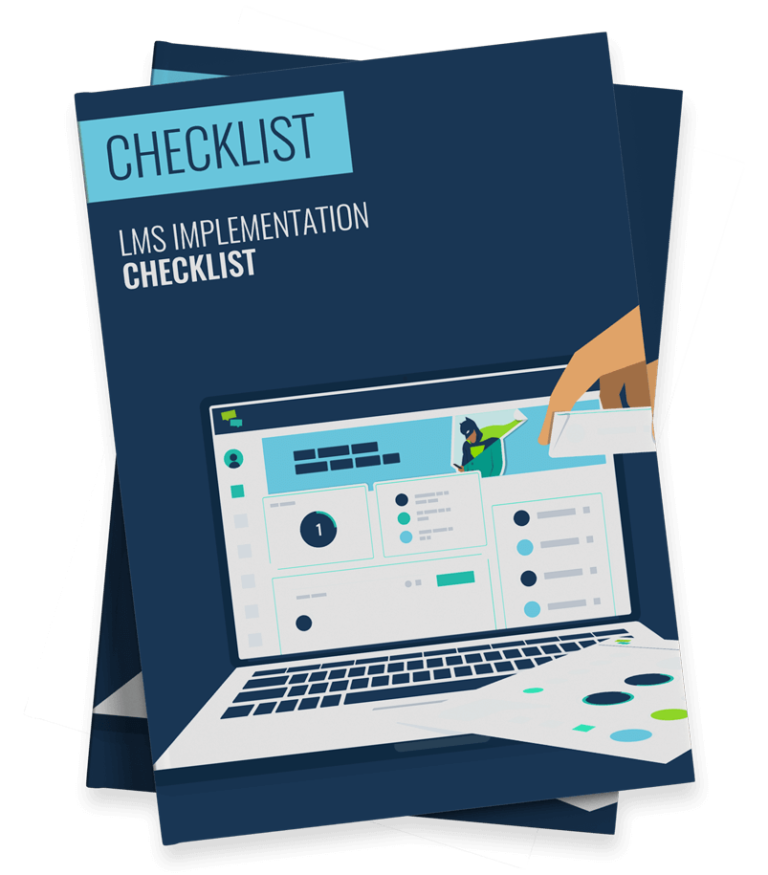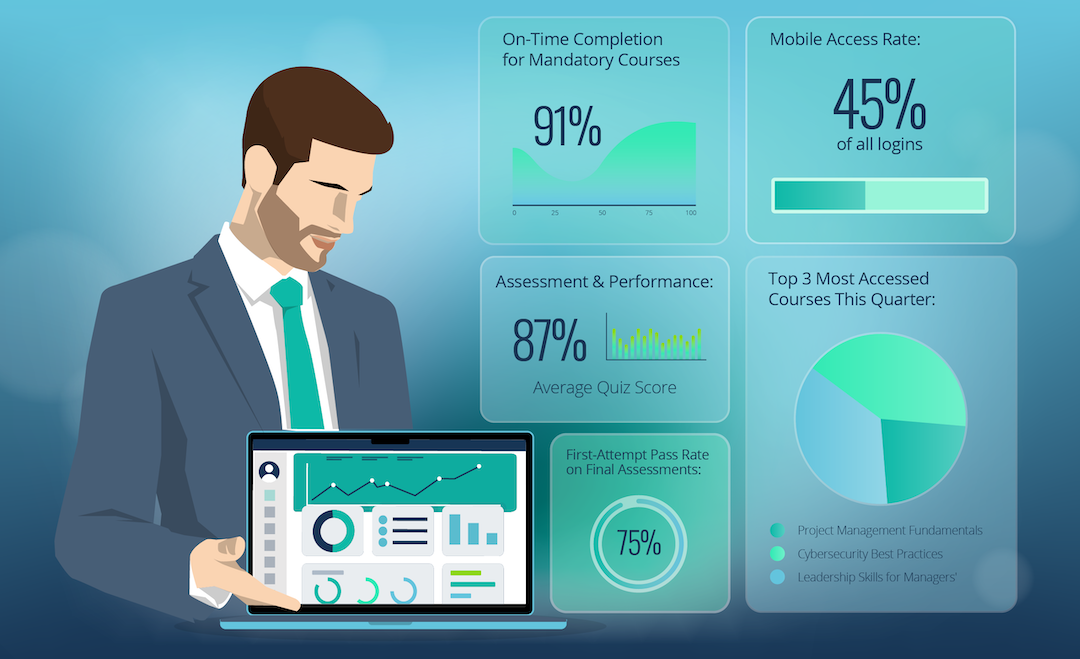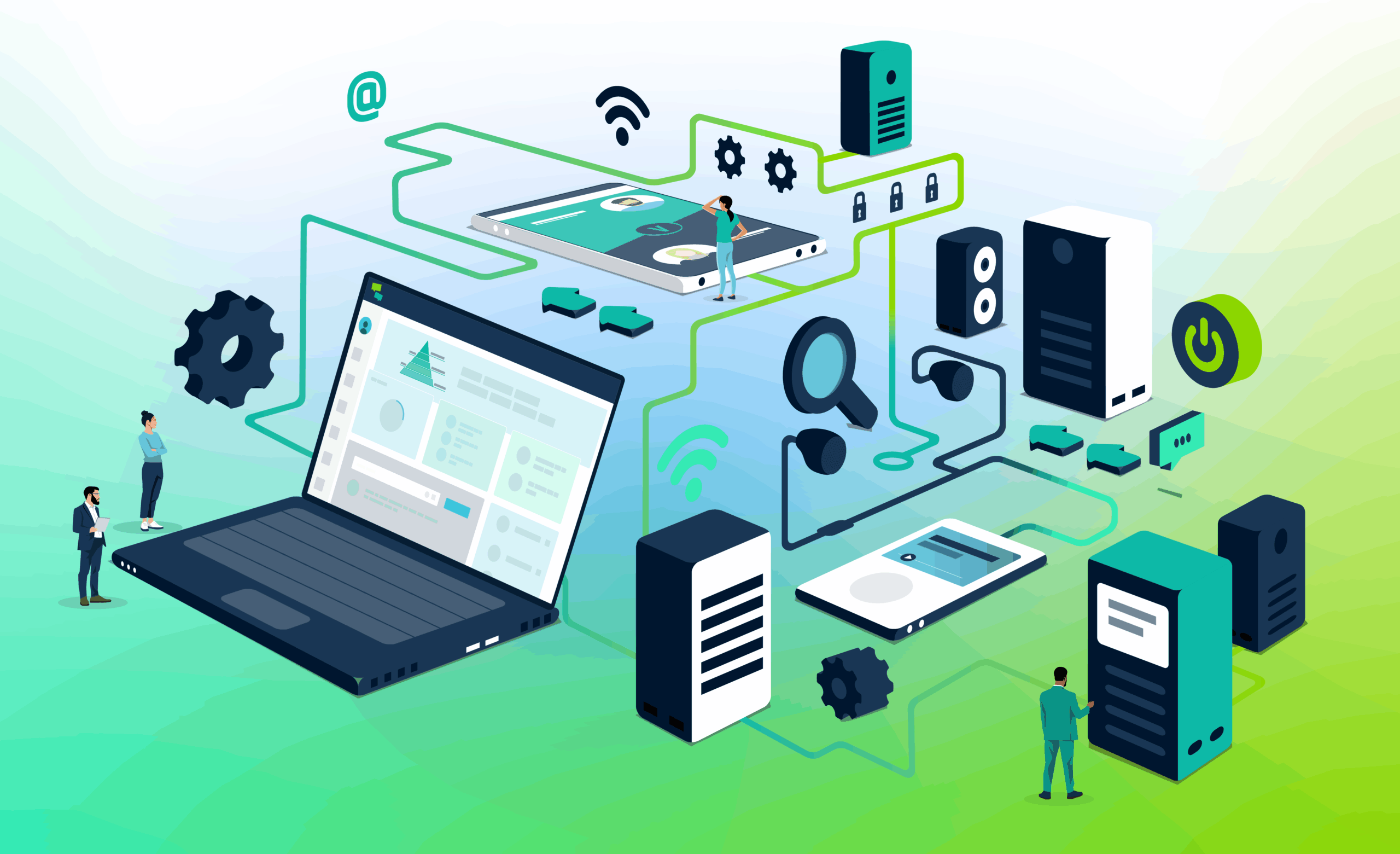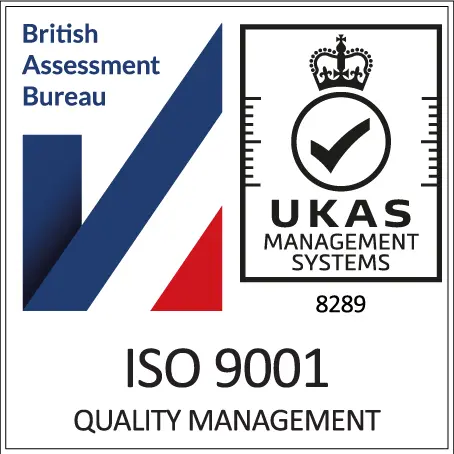Just purchased a brand-new LMS and ready to pop the confetti cannons? Launching a new learning platform is exciting, but it can also be overwhelming. Between potential technical hiccups, organising your content, and getting learners on board, there’s a lot to manage. But fret not! That’s why we created this 12-step LMS Implementation Guide.
Consider it your no-fluff playbook for rolling out a learning platform that people actually want to use. We’ll cover everything from creating epic themes and killer communication plans to tackling the technical details you may not have thought of.
This guide is broken down into three simple phases: planning, building, and launching, so you can easily track your progress. Ready to make it happen? Then let’s start by laying the groundwork for a successful implementation.
LMS Implementation Phase 1: The Master Plan
1. Lock in Your ‘Why’:
Before you even think about tech specs, customisation, or content, you need to define the core purpose of your new learning management system (LMS). Remember, this isn’t about features; it’s about achieving a specific mission.
Are you aiming to close critical skill gaps in your organisation? Or do you need to streamline your compliance training efforts? By identifying your key business objectives, you’ll ensure every decision you make for your new platform is strategic and impactful.
At this stage, work to outline the following elements:
- Learning Objective: This is the big picture. Define what your organisation will be able to do after a successful platform launch. For example: ‘Improve customer satisfaction scores by 10%‘ or ‘Reduce new hire time-to-competency by 30 days.’ Consider this your north star.
- Success Criteria: An objective is just the starting point. To truly bring it to life, you need to define how you’ll measure it. Lock in specific, trackable metrics from the outset. For instance, if you’re aiming to improve customer satisfaction, ensure you have access to the data you need.
- Timeline: A strong goal is always time-bound. Establish a realistic timeline for your major phases — planning, building, launching, and optimising (see below). This doesn’t mean a minute-by-minute schedule, but rather key deadlines that keep everyone aligned on the journey.
🔭 Pro-Tip: This ‘Why’ is your shared vision. Lock it in, shout it from the rooftops, and use it to fuel every single decision you make.
2. Gather Your Launch Squad
Launching an LMS is a team sport. Try as you might, you won’t be able to conquer this quest alone. At this stage, it’s time to assemble a cross-functional team with the right mix of skills and influence to champion this project.
Identify these key roles for your project team:
- The Executive Sponsor: The high-level champion who removes roadblocks and helps to secure budget.
- The Project Lead: The day-to-day driver who keeps everything on schedule. This is likely to be you.
- The Tech Wiz: The IT partner who will handle all the technical details, from platform configuration to data migration.
- The Content Champ: The master trainer or SME who knows your existing training materials inside and out.
- HR & Managers: Finally, ensure you have representation from HR or team managers who understand your learners’ needs.
🤝 Pro-Tip: Your first kick-off meeting is more than just a status update. It’s a rally cry. Use it to unite your team around your mission and transform task-doers into true believers.
3. Plot Your Course
Now it’s time to put yourself in your learners’ shoes. This step is all about mapping the learner experience from their very first interaction with your new LMS to their ongoing development. It’s up to you to transform every click into an engaging and game-changing experience.
Start by creating simple learner personas. These are fictional, archetypal profiles that represent your key audience segments. They’ll help you to make smarter decisions about content, communication, and platform design.
Next, for each persona, plot their unique route to success:
- The Starting Point: What are your learners’ current skills and pain points? Where are they currently in their learning journey?
- The Path: What’s the ideal learning path for each persona? Think about the mix of eLearning, virtual workshops, and microlearning resources they’ll need.
- The Finishing Line: What does success look for each audience segment? Is it mastering new software, earning a certificate, or simply feeling more confident?
👥 Pro-Tip: Need a hand? Grab our free persona template to get started!
4. Find Your Epic Meaning
Before we get more hands on, it’s time to bring your mission (as established in step 1) to life. By establishing your platform’s ‘epic meaning’, you’ll transform learning from a task into a purpose. And when learners feel like they’re part of something bigger, their engagement shifts from obligation to passion.
This is your chance to establish a clear theme linked to your company’s mission and learning objectives. When done right, this will recontextualise your platform, transforming it into a crucial engine for achieving something great.
As a result, your learners will be driven by a genuine desire to contribute, not just by external rewards or mandates.
Keep in mind that this theme will be woven into the fabric of your platform. It will influence its name, its look and feel, your game mechanics, and even the way you frame your content. We’ve included some examples below for inspiration:
| Area | Mission | Theme |
| Technology | Lead the market through boundless innovation. | The Launch Pad: A thrilling journey of creation, with levels based on ‘Launch Sequences’ and badges named after innovation pioneers. |
| Security | Reinforce the core tenets of security, integrity, and trust. | The Vault: Employees don’t just complete training, they earn ‘Clearance Levels’, and collect ‘Intel Points’ (XP) to help fortify their defenses. |
| Sustainability | Drive participation in the company’s sustainability goals. | The Collective: Learners complete training and participate in challenges to earn ‘Impact Points’ and special ‘Green Badges’ that build their reputation. |
💫 Pro-Tip: Your epic meaning, theme, and brand should be a perfect trio. Think about how they’ll work together — this will give you a head start on step 8.
LMS Implementation Phase 2: Build, Design, & Prep
5. Audit Your Content
There’s a good chance you already have a healthy collection of training content. Of course, it won’t all be gold. Thankfully, this step is your chance to sort, declutter, and rejuvenate your learning materials before the big move to your shiny new LMS.
First, take stock of everything you have. Round up all your training content (think eLearning modules, PDFs, PowerPoint decks, video links, and worksheets). Dump it all into a giant spreadsheet and add the following columns:
- Content Title: What is it?
- Content Description: What does the material cover?
- File Type: Is it SCORM, MP4, PPT, or just a dead link?
- Accuracy: Is the information still correct and relevant?
- Condition: Is it modern and engaging, or dated and boring?
Based on this information, you should be ready to make some tough calls. Tag each asset to determine its fate:
| 🟢 Keep & Migrate | 🟡 Update & Improve | 🔴 Retire & Archive |
| This content is perfect and can be moved over to your new LMS as-is. | The core is good, but it needs a fresh look, new branding or slight edits. | This content is outdated. Thank it for its service and let it go. |
Then it’s over to your content champ and instructional designers to refresh and reformat your content as needed. What’s more, this is also a great opportunity to identify content gaps. What new topics or skills do your learners need to master?
📖 Pro-Tip: Be ruthless. If it’s not accurate, engaging, or relevant, don’t migrate it. First impressions matter. Launch with your A-game to win learner trust from day one.
6. Let’s Get Technical
Don’t let the word ‘technical’ scare you. This step is all about building a seamless, secure, and smooth experience for your learners. Getting these foundations right is what will transform your LMS from a mere platform into a powerful, integrated hub.
At this stage, work with your IT expert to determine what’s needed. And remember, your new platform’s power will be multiplied when it talks to your other business systems. With that in mind, here are some integrations you’ll want to prioritise:
- HRIS Integration: Automate user creation and deactivation by connecting to your HR system (like Workday, SAP, or BambooHR). That way, when someone is hired, they’re automatically added to your LMS. Likewise, when they leave, their access is deactivated.
- Single Sign-On (SSO): Your learners should be able to log in with the same credentials they use for everything else (like their work email). This is usually non-negotiable for user adoption.
- Video Conferencing Tools: Consider integrating with tools like Zoom or MS Teams to schedule and launch virtual training right within your LMS.
- API Connections: The fun doesn’t stop there! You may also consider connecting to your CRM to trigger training based on real-world events, Shopify to enable eCommerce, and Business Intelligence tools to take your reporting to the next level.
If you’re moving from another platform, you’ll also need to port your user data and learning records into their new home. This is typically handled by your HRIS integration. If not, you’ll need to prepare a clean CSV file with user details (name, email, department, manager, etc.) for import.
Depending on your platform, you might have a few more elements to configure. For example, on Growth Engineering LMS, we’ll also help you to set up your AI-powered knowledge assistant and accessibility tools at this stage.
⚙️ Pro-Tip: You are not alone in this. Schedule regular check-ins with your vendor’s Customer Success Manager. They’ve done this hundreds of times, so don’t be afraid to lean on their expertise.
7. Lay the Foundation
The technical plumbing is in, so now it’s time to design the house. Configuration is where you transform a generic platform into your unique learning hub. It’s all about adding structure, rules, and organisation necessary to create a compelling user experience.
A great place to start is by assigning the right level of access to the right people. Here’s the main roles you’ll want to consider:
- Administrators: Full power! These users have full platform access, so use this role sparingly.
- Learners: Your main user type. These users can only see and access content based on pre-set permissions.
- Managers: These upgraded users can track the progress of their team and run reports without full admin powers.
Most platforms also offer specialised roles like Instructors, Content Creators, or Coordinators. On Growth Engineering LMS, you can even create ‘Admin Lite’ users — perfect for granting limited backend access to L&D specialists without handing over the master keys.
You’ll then need to replicate your organisational structure on your LMS. Setup your hierarchy to include all the Teams, Departments, Branches, and Countries you need. This is a huge time-saver for management and reporting.
Finally, use your content audit from step four to decide upon your library categories. Organise your content in a way that makes sense for your users. Consider structuring it by skill, topic, department, or compliance need to ensure it’s logical and easy to navigate.
🧱 Pro-Tip: Sometimes less is more. Start with a broad, simple category structure. You can always build in more sub-categories at a later stage.
8. Make it Shine
Ready to make your LMS unmistakably yours? This is where you infuse every element with your brand’s identity, ensuring it feels like a vibrant part of your culture, not just another piece of software. The reward? A deeply engaging experience that learners actively want to be a part of.
Work with your marketing team to ensure the platform’s look and feel aligns with your brand guidelines. And don’t be afraid to lean into your established epic meaning. You’ll want to consider the following elements:
- Colour Palette: Inject your brand colours everywhere. Use your primary colour for buttons, headers, and highlights. This simple change will make your platform feel instantly familiar.
- Typography: Use your brand fonts for headings and body text across the platform. This will help to reinforce your identity. What’s more, customise the copy used throughout the platform to reflect your company’s unique voice.
- Imagery: Add brand imagery and assets across key platform touchpoints. Avoid using stock photos or any graphical assets that will pull your learners out of the experience.
- Name & Theme: There’s nothing worse than calling your platform ‘[Company Name] LMS’. Instead, go with something creative based on your designated epic meaning. Weave this name into all your communications.
- Gamification: If your LMS has gamification features (like points, badges, and leaderboards), brand them too! Create custom badge names and imagery that reflect your company’s values.
🎨 Pro-Tip: You should be able to look at your LMS and immediately know it belongs to your company. If it feels generic, keep working. And if you need more branding support, head here.
LMS Implementation Phase 3: The Go-Live (and Beyond)
9. The Soft Launch
You’ve set the stage for success. But first, it’s time for a dress rehearsal. This soft launch is your strategic, low-risk opportunity to stress test everything in the real world using a small and friendly audience, before rolling out to your wider organisation.
As you can imagine, this is an essential step, so you’ll want to choose your test pilots wisely. Recruit a diverse and representative group of about 5-10% of your final users. You’ll want to include:
- Early Adopters: Who will give you enthusiastic feedback that you can use in your communication materials (more on this shortly).
- Critical Thinkers: Who will go through the platform with a fine-tooth comb and find flaws that everyone else misses.
- Technical Luddites: Who may struggle with operating the new system. If they can use it smoothly, then anyone can.
- Learner Representatives: Who are from different departments and levels of seniority, offering a broad range of opinion.
Be crystal clear with your pilot group about what you’re testing and what you need from them. It helps to provide a mission and a timeline. Most importantly, ensure they have an easy way to provide feedback and report bugs.
🚀 Pro-Tip: Your pilot group is providing a crucial service. Why not show your appreciation by awarding exclusive platform badges or entry into a prize draw?
10. Building Buzz
Your launch won’t succeed if nobody knows about it, or if you fail to give your audience a reason to care. Your communication plan is your strategic blueprint for building excitement, providing clarity, and encouraging adoption.
Start by getting crystal clear on your key messages. Every communication should reinforce these points:
- What is it?
- Why are we doing it?
- What’s in it for me?
- What do I need to do?
With this established, you’re ready to kick-off your internal marketing campaign. Don’t rely on one all-staff email. Instead, create a steady flow of messages across multiple channels to build anticipation and reinforce your core message. You can find an example flow below.
| When | Asset | Audience | Message |
| 4 Weeks Out | Teaser email and office posters | All | Highlight that something exciting is coming. |
| 2 Weeks Out | Official announcement video | All | Announce the name and core benefits. |
| 1 Week Out | Manager tool kit and briefing | Managers | Give managers the details they need to get started. |
| Launch Week | Invitation email | All | Include the login link and clear first steps. |
| Go-Live Day | CEO announcement | All | Showcase leadership excitement to drive adoption. |
| Post-Launch | Success stories newsletter | All | Share early wins and learner feedback. |
🎉 Pro-Tip: Every team has natural influencers. Try to identify them early on in your pilot group. At this stage, you can then arm them with the information they need to become unofficial ambassadors.
11. Arm Your Admins
Your admins (those users with full platform access) are the guardians of your new LMS. They’re your most critical lever for long-term success. That’s why it’s so important to invest in both their confidence and their competence.
Most LMS vendors offer comprehensive admin training programmes, so take full advantage of them. While the specific curriculum will vary, ensure your admins know how to manage users, set up reporting dashboards, create new learning pathways, and customise the platform’s appearance.
They should also be able to solve common issues. For example:
- What’s the process if a user can’t log in?
- How do they pull a specific report for a manager?
- Can they check a learner’s completion status?
And so on. To help your admins get up to speed even quicker, consider providing them with a set of easy-to-use resources. This could include a reference guide, a list of frequently asked questions, and a direct line to your LMS provider’s support team.
🛠️ Pro-Tip: Some vendors may provide you with a sandbox or practice environment where your admins can get hands-on experience without the fear of breaking anything. Confidence comes from practice.
12. Post-Launch Fun
After months of hard work, that moment of truth arrives. You’ve launched your swanky new LMS to your entire organisation. Take a moment to celebrate — you’ve earned it!
But remember, a great LMS isn’t a ‘fire-and-forget’ project. It’s a living, breathing ecosystem that requires nurturing and care. With this in mind, the next part of our LMS implementation guide is a playbook for keeping the momentum alive:
- Gather Feedback: Immediately after launch, switch from broadcasting to listening. Ensure your learners have an easy way to provide feedback (this could be a simple form, or even a Slack channel) and submit support tickets. This helps to build trust and co-ownership.
- Offer Support: Use this data to proactively fix pain points. Over time, create a centralised, searchable page on your intranet with all relevant information, reference guides, and video tutorials. That way your learners know where to turn if they get stuck.
- Communicate Wins: If your LMS implementation is a major success, then let the world know! Use company newsletters and other touchpoints to celebrate engagement metrics, logins, courses completed, and so on. Don’t forget to include positive quotes and testimonials from fellow learners.
- Challenges & Campaigns: Have a plan in place for when the initial buzz dies down. This should involve a constant flow of new, fresh content. Pair this with lively social learning campaigns or challenges to keep your learners engaged. As a result, learners will always have a reason to keep coming back.
- Leverage Gamification: Tap into intrinsic motivation by making learning rewarding and social. Use your platform’s game mechanics, like points, badges, and leaderboards to incentivise activity. Growth Engineering LMS even includes customisable quiz-based Knowledge Contests!
- Reporting & Optimisation: The real value of your new LMS is in the data. Go beyond simple login rates and course completions. Use your reporting suite (and AI tools) to establish if you’re working towards your learning objectives. And don’t forget to keep your stakeholders up to date.
🥳 Pro-Tip: Treat your LMS as an asset, not a project. Stay updated on new vendor features and regularly assess your content library to retire outdated material and fill gaps.
Final Words
There you have it. As this LMS implementation guide shows, launching a new learning platform is more than just flipping a switch. It’s a strategic, multi-phase process that requires careful planning and real elbow grease.
Thankfully, with the right team in place, a good vendor, and this playbook as your guide, you’re set up for success.
Just remember, the journey doesn’t end after launch. Instead, the real work begins now, as you refocus your efforts on creating engaging content and keeping your learners inspired. You’ve laid a solid foundation — now it’s time to build on it!
Thanks for reading. If you’ve enjoyed this content, please connect with me here or find more articles here.
Need more help with your LMS implementation? We’ve got you covered. Download our interactive implementation checklist now to mark off your progress as you go and ensure a smooth rollout!


